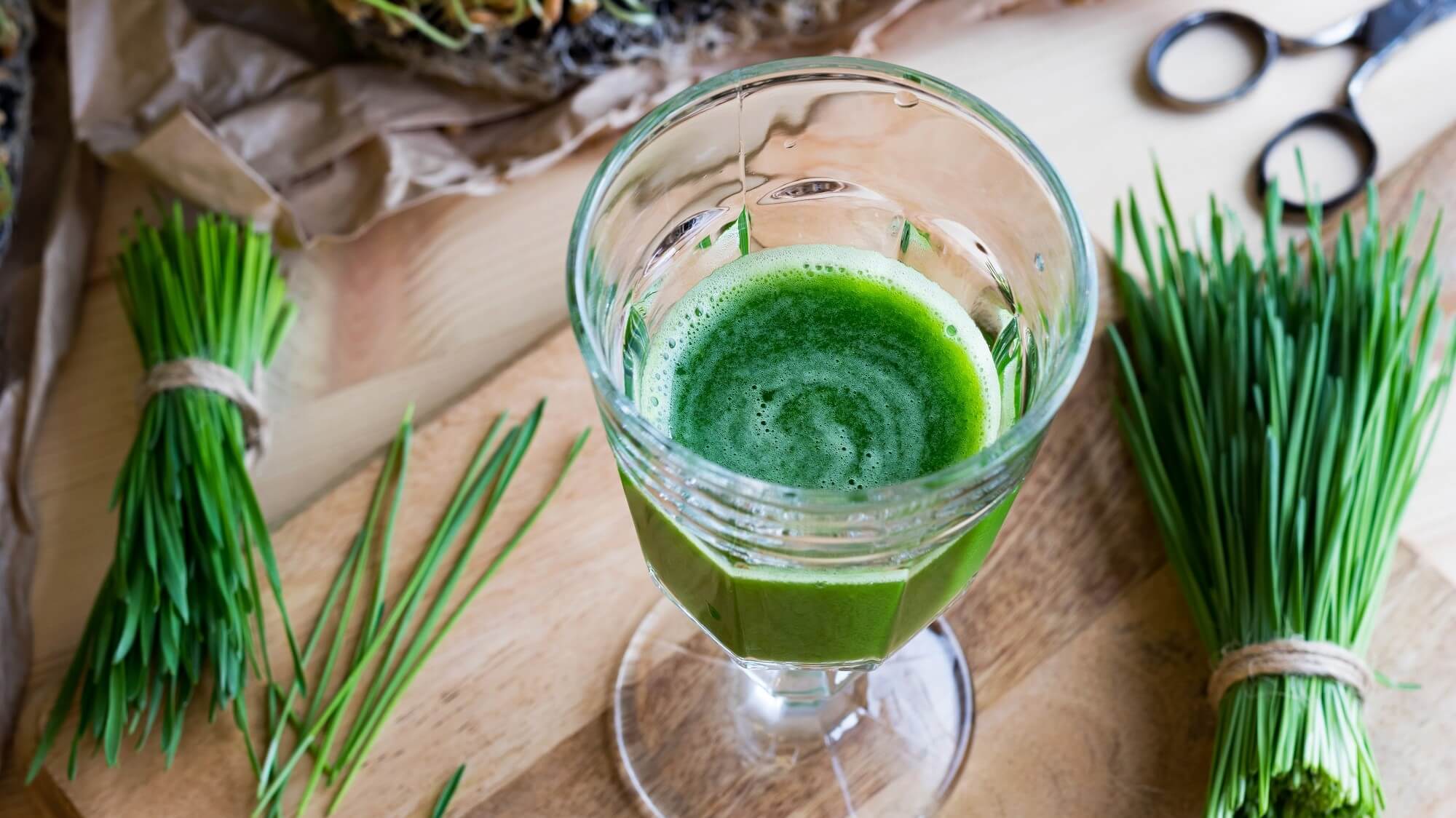
Wheatgrass juice has gained popularity as a powerful superfood in recent years. Made from the young shoots of the wheat plant, this vibrant green juice is packed with a wide range of nutrients and is touted for its numerous health benefits. From detoxification to immune support, the benefits of wheatgrass juice are seemingly endless.
In this article, we will explore 18 fascinating facts about wheatgrass juice that will surely inspire you to incorporate it into your daily routine. Whether you’re a health enthusiast or simply curious about the hype surrounding this potent wellness elixir, get ready to discover the incredible properties of wheatgrass juice and why it has become a staple in the health and wellness community.
Key Takeaways:
- Wheatgrass juice is a vibrant green elixir packed with vitamins, minerals, and antioxidants that may support the immune system, aid in digestion, and promote healthy skin.
- It’s best to consume wheatgrass juice on an empty stomach for optimal absorption and to look for organic, reputable brands to ensure quality and safety.
Wheatgrass juice is made from the freshly sprouted leaves of the common wheat plant, Triticum aestivum.
Rich in vitamins, minerals, and antioxidants, this green elixir has gained popularity for its potential health benefits.
Wheatgrass is believed to have originated in ancient Egypt, where it was revered for its rejuvenating properties.
The Egyptians used wheatgrass as a natural remedy for various ailments and as a way to boost energy and vitality.
Wheatgrass juice is known for its high chlorophyll content, which gives it its vibrant green color.
Chlorophyll is thought to have detoxifying effects on the body and may help in supporting healthy blood circulation.
Drinking wheatgrass juice is said to support the immune system and help in fighting off infections.
Its nutritional profile, including vitamins A, C, and E, can help strengthen the immune response.
Wheatgrass juice is a potent source of antioxidants that help protect the body against harmful free radicals.
These antioxidants may help reduce oxidative stress and lower the risk of chronic diseases.
Consuming wheatgrass juice is believed to aid in digestion and promote a healthy gut.
It contains enzymes that assist in breaking down food, as well as fiber that supports regular bowel movements.
Some people believe that wheatgrass juice can support weight loss due to its low-calorie content and ability to boost metabolism.
However, more research is needed to validate these claims.
Wheatgrass juice is known for its alkalizing properties, which may help balance the body’s pH levels.
An acidic body environment is believed to contribute to various health issues, and wheatgrass juice is often consumed to promote alkalinity.
It is recommended to consume wheatgrass juice on an empty stomach to maximize its potential health benefits.
Drinking it in the morning or between meals is often suggested for optimal absorption.
Wheatgrass juice can be consumed alone or mixed with other fruits and vegetables to create refreshing and nutritious smoothies.
Adding apple, lemon, ginger, or cucumber can enhance the flavor and provide additional nutrients.
Drinking wheatgrass juice is not recommended for individuals with gluten intolerance or celiac disease.
While wheatgrass itself is gluten-free, there may be a risk of cross-contamination during the juicing process.
Wheatgrass juice is best consumed fresh as it can quickly lose its nutritional value when exposed to air and sunlight.
It is often recommended to juice wheatgrass at home or purchase cold-pressed juices from reputable sources.
Some people may experience detoxification symptoms when first consuming wheatgrass juice.
These symptoms can include headaches, nausea, or an upset stomach. It is advisable to start with small quantities and gradually increase intake.
Wheatgrass juice is commonly used in natural skincare products due to its potential benefits for the skin.
Its high antioxidant content may help reduce skin inflammation and promote a healthy complexion.
Wheatgrass juice is not a replacement for a balanced diet but can be a valuable addition to a healthy lifestyle.
It should be consumed as part of a varied diet that includes fruits, vegetables, whole grains, and lean proteins.
Growing your own wheatgrass at home is an easy and cost-effective way to enjoy this nutritious beverage.
You can purchase wheatgrass seeds and grow them in trays or pots, providing you with a continuous supply of fresh wheatgrass.
The taste of wheatgrass juice is often described as intense and grassy.
Some find it pleasant, while others prefer to mix it with other ingredients to mellow the flavor.
When purchasing wheatgrass juice, opt for organic and reputable brands that prioritize quality and safety.
Ensuring that the wheatgrass is grown without pesticides or chemicals is essential for maximizing its health benefits.
Conclusion
Wheatgrass juice is a nutrient-dense and powerful health elixir that offers numerous benefits for our overall well-being. From its ability to detoxify the body, boost immune function, aid digestion, and provide essential vitamins and minerals, to its potential anti-inflammatory and antioxidant properties, wheatgrass juice is truly a superfood worth incorporating into our daily routine. Whether consumed on its own or added to smoothies or juices, wheatgrass juice can provide a natural energy boost and support optimal health.
FAQs
Q: What is wheatgrass juice?
A: Wheatgrass juice is the extracted liquid from the young grass of the wheat plant, Triticum aestivum. It is typically consumed as a shot or added to other beverages.
Q: What are the benefits of drinking wheatgrass juice?
A: Wheatgrass juice is rich in nutrients like vitamins A, C, and E, minerals, amino acids, and chlorophyll. It can help detoxify the body, boost the immune system, improve digestion, enhance skin health, and provide antioxidant support.
Q: How should I consume wheatgrass juice?
A: You can consume wheatgrass juice on its own, as a shot, or mix it with other juices or smoothies. It is recommended to start with small amounts and gradually increase your intake.
Q: Are there any side effects of drinking wheatgrass juice?
A: While rare, some individuals may experience nausea, headaches, or allergic reactions when consuming wheatgrass juice. It is advisable to consult with a healthcare professional if you have any concerns or medical conditions.
Q: Can I grow my own wheatgrass at home?
A: Yes, you can grow wheatgrass at home by sprouting wheat seeds and then transferring them to a tray of soil. With proper care and sunlight, you can have your own fresh wheatgrass to juice.
Wheatgrass juice's impressive health benefits may inspire you to explore other fascinating topics. Dive into the captivating world of organic chemistry, uncover essential nutrition facts, or discover the power of green juice. Each subject offers a wealth of knowledge that can enrich your understanding of health and wellness. Whether you're a science enthusiast or simply curious about improving your well-being, these engaging articles will provide valuable insights and inspire you to make informed choices for a healthier lifestyle.
Was this page helpful?
Our commitment to delivering trustworthy and engaging content is at the heart of what we do. Each fact on our site is contributed by real users like you, bringing a wealth of diverse insights and information. To ensure the highest standards of accuracy and reliability, our dedicated editors meticulously review each submission. This process guarantees that the facts we share are not only fascinating but also credible. Trust in our commitment to quality and authenticity as you explore and learn with us.


